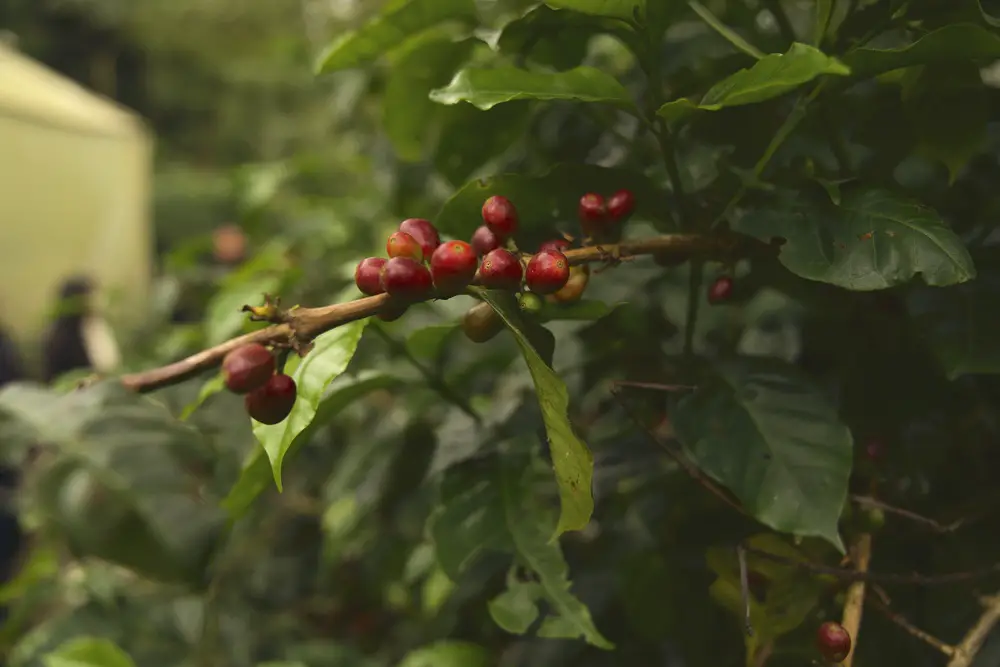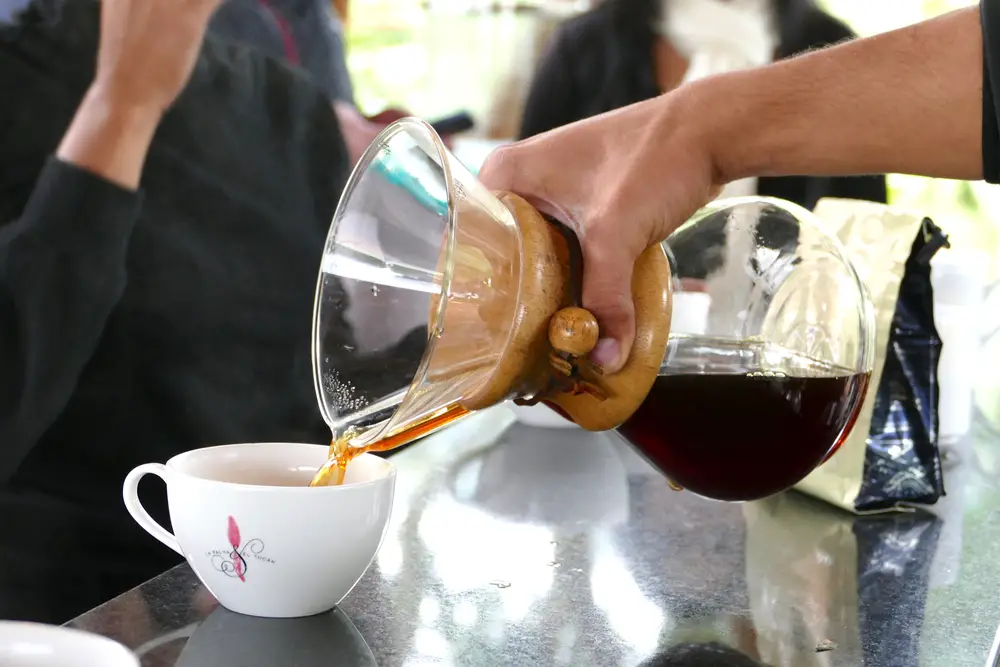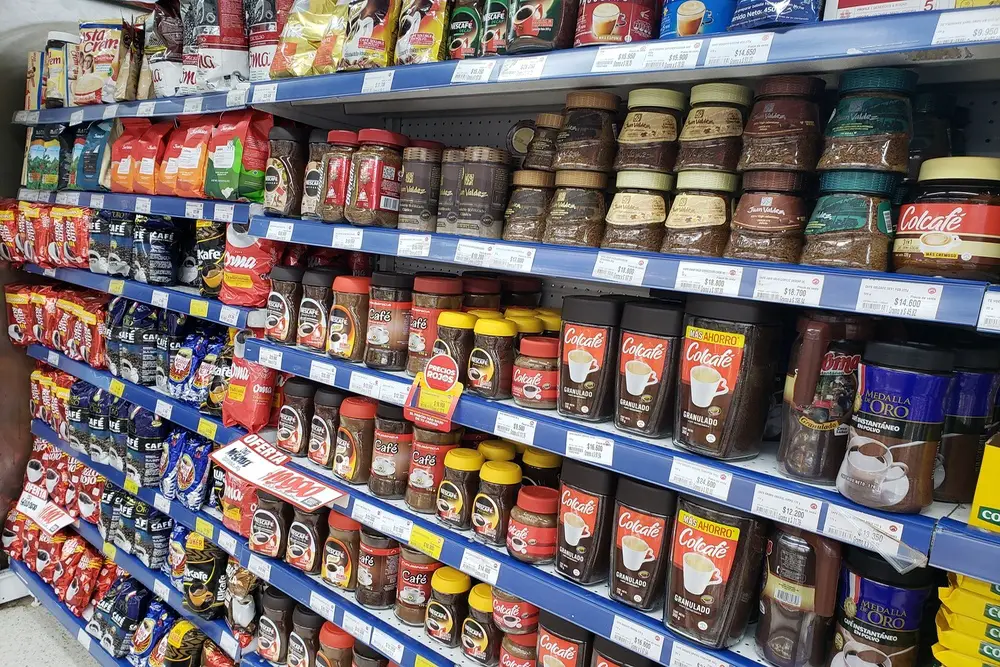Table of Contents
35 random facts about coffee
Decaffeinated does not mean decaffeinated
A cup (236 ml) of decaffeinated coffee in the United States contains between 2 and 12 milligrams of caffeine, according to the Mayo Clinic.
In contrast, a 6-ounce cup of regular (caffeinated) coffee contains between 95 and 200 milligrams of this alkaloid.
Therefore, while decaffeinated coffee contains caffeine, it contains a much smaller amount of this substance compared to other preparations.
Coffee as a beauty product
The coffee residue left after brewing is also an exfoliant that can remove dead skin cells.
Applying small amounts to skin can help make it feel smooth and look radiant.
Some of the first energy bars in history were made with coffee
Whether you know it or not, ripe coffee beans have been part of the diet of many African tribes for thousands of years.
Some tribes in Ethiopia are known to have mixed the freshly picked, ripe fruits of the coffee tree with fat to form an edible, high-energy ball.
Caffeine sensitivity is hereditary
The duration and intensity of the effects of caffeine are directly related to the rate of metabolism in our body. However, we don’t all metabolize caffeine in the same way.
This explains why there are people who can drink 5 or more cups of coffee a day and feel virtually no effects. At the same time, there are people who, even with a small amount of this drink, begin to tremble and feel very bad, because they are very sensitive.
And that sensitivity is passed down in the genes. So, if you know a relative (parent or grandparent) who is very sensitive to caffeine, you should drink coffee (and other beverages) with caution, at least until you are sure that you are not very sensitive.
The higher the degree of roasting of the bean, the lower the caffeine content
High temperatures break down the caffeine. One method of decaffeination is therefore to expose the coffee beans to high temperatures. So, the end product has a lower concentration of caffeine but also a much stronger flavor.
Brazil is the largest coffee producer in the world
According to the International Coffee Organization (IKO), Brazil grows the largest amount of coffee in the world, with the South American country’s production accounting for 30% of all coffee in the world.
Even Vietnam, the world’s second largest producer of this plant, only produces half of the Brazilian amount.
You could be overdosing on caffeine
Don’t worry, caffeine overdoses do exist, but are very unlikely to happen. This is because a person would need to drink about 30 cups of coffee at very short intervals to get intoxicated.
However, there are some other substances, such as B. Energy drinks or some medicines that contain high amounts of caffeine and can therefore be toxic in small doses.
Too much caffeine can have life-threatening cardiovascular effects because it affects the nervous system, which in turn affects heart rate and blood pressure.
So, if you are sensitive to caffeine, you should always consult a doctor before taking any medication or any substance, as caffeine is found in many products.
Coffee contains three times as much caffeine as tea or soft drinks
First of all, it must be made clear that not all commercially available coffees and teas have the same caffeine content. In addition, the preparation of these drinks can also affect the concentration of the alkaloid.
On the other hand, almost all soft drinks have the same caffeine content. So, keep in mind that a medium-sized cup of coffee (6 ounces or 177 ml) contains about 150 mg of caffeine on average.
On the other hand, a cup of tea of the same size (6 ounces) can contain an average of 50 mg of caffeine. Likewise, a 12-ounce (354 mL) can of soda pop contains between 50 and 60 mg of the alkaloid.
The coffee became popular in Yemen
Coffee is believed to have been introduced to the Arab world in the 15th century by Yemeni merchants who, on a trip to Ethiopia, decided to bring some plants back to their country.
Records show that Sufi Muslim monasteries brewed a dark drink to help them stay awake during their nightly prayers.
Later, the coffee was exported to the entire Muslim world via the port of Mocca, which is why the coffee also bears this name.
The discovery of coffee
According to legend, an Ethiopian herder discovered the effects of coffee when he noticed his goats behaving strangely. The animals jumped and ran all over the plain after eating the fruit of a small tree, the coffee tree.
The boy decided to try some beans and although he didn’t like the bitter taste, he felt a sudden surge of energy so he decided to pick up some beans and take them with him.
Later the boy took the beans to the priests in his village and they decided to make a drink out of the beans; at first, they didn’t like the taste and decided to throw the beans on the fire.
However, when the beans gave off their distinctive smell, the priests were delighted and decided that it would be best to roast the beans first in order to prepare something.
The globalization of coffee is a Dutch achievement
The Yemenis held the coffee monopoly for more than a century, so during this period coffee was almost exclusively a Muslim product. However, in the 17th century, a group of merchants from the Netherlands managed to smuggle some coffee plants onto their ships.
Therefore, the Muslims were very vigilant with the coffee, knowing full well that they were holding a gold mine and therefore had no intention of sharing it.
Consider that if the Dutch traders were caught, they would have literally lost their heads, as stealing coffee products was punishable by death.
The Revolutionary War caused the United States to favor coffee over tea
Before the American Revolutionary War in the late 18th century, tea was the most important drink on the table of everyone, rich and poor. However, as the war progressed, anti-British sentiment grew and it became popular to reject anything associated with the United Kingdom.
This led to people viewing the enjoyment of tea almost as a betrayal. At the same time, coffee, which until then had hardly been consumed, became an increasingly popular beverage.
For most Americans today, drinking coffee is part of their daily routine.
Coffee cultivation is not very environmentally friendly
According to various sources, making a cup of coffee uses over 100 liters of water. However, one should keep in mind that many of these calculations are based on false foundations. For example, rainwater that re-enters the water cycle is counted in full. This is of course absurd!
Drinking coffee was forbidden under penalty of death
Due to the stimulant nature of caffeine, it was believed to be a mind-altering substance, which is why it was considered a dangerous substance and forbidden in Islam. In other words, it was practically a sin to drink coffee, and if caught doing so, it could cost you dearly.
But probably also the fact that people gathered for coffee while questioning the law and religion (thus endangering the elites) had something to do with it.
Because coffee has been associated with freedom of thought, something that authoritarian people don’t particularly like.
The less caffeine you consume regularly, the stronger its effect
The receptors in the brain are initially very sensitive to caffeine. However, over time, they become desensitized to the effects of the alkaloid, which is known as attenuation.
So, the more caffeine you consume and the more often you consume it, the less effect it has on your body.
So, the same dose of caffeine, e.g. B. 95 mg (1 cup of coffee) will soon have no effect and to feel more alert you need to increase the dose.
However, it is recommended to limit intake to about one cup per day.
That way, when you really need the effects of caffeine, you don’t have to risk consuming large amounts. Remember that too much caffeine is bad for your health and can lead to symptoms such as: e.g.:
- anxiety
- sleep disorders
- digestive problems
- muscle cramps
- palpitations
Coffee came to Brazil through flirtations
There is a legend that coffee was brought to Brazil by a sailor named Francisco Melo Palheta. Apparently, Palheta smuggled coffee beans out of French Guiana after flirting with the wife of the governor of French territory.
Subsequently, the drink became popular among the Brazilian elite, and large-scale cultivation of the plant began soon after.
An experiment with coffee
In the 18th century, King Gustav III. of Sweden conducted an experiment to find out what effects drinking coffee might have on health. In exchange, the king ordered the death sentences of two young twin brothers to be commuted if they agreed to drink coffee and tea for the rest of their lives.
One young man only drank coffee and the other only tea. Then two doctors were assigned to conduct tests and transmit the results directly to the king. Unfortunately, these doctors mysteriously died before the king could complete his studies.
Incidentally, the king also died soon after, so we will hardly know the consequences of this curious diet.
You could heat a cup of coffee by screaming, but should you?
Someone, somewhere, calculated (we don’t know why) that a scream of exactly 8 years, 7 months, and 6 days generates enough heat to brew a cup of coffee.
While we don’t quite understand why this should be useful, it’s at least quite odd.
Only oil is better than coffee
Humanity consumes so much coffee that it has become the third most traded commodity on our planet after sand and petroleum.
In general, the only beverage consumed more than coffee is water, which is perhaps why the coffee industry is estimated to be worth around $100 million a year.
The most expensive coffee in the world is shit
Kopi Luwak is an Indonesian coffee that is considered the most expensive coffee in the world with prices between 350 and 600 euros.
According to the producers of this coffee, the high price is due to the fact that the coffee beans serve as food for the civet (a mammal native to Southeast Asia).
As soon as the animal excretes the pre-digested beans, they are ready for the preparation of the finished coffee.
Finland is the largest per capita consumer of coffee in the world
According to the International Coffee Organization, the average adult Finn consumes 27.5 pounds of coffee a year. Norway is second, followed by Iceland and fourth is Denmark.
This seems to indicate that the further north people live (at least in Europe), the more they like coffee.
Even in space, people drink coffee
Scientists at Portland State University are working on developing a special cup so astronauts don’t have to drink their coffee from a bag. Either way, you can enjoy coffee in any presentation in space!
In case you’re wondering, the reason astronauts drink coffee out of a bag is because of the weightlessness, or lack of gravity, of space. But if you want an anti-gravity mug for your favorite coffee, you can get one for $500.
Weary? How about a caffeine nap?
We’re not sure why, but apparently drinking coffee (1/2 cup) and then taking a nap wakes you up feeling awake and ready to do whatever you need to do.
Women prefer coffee
At least, a survey conducted by CreditDonkey found that 66% of women in the United States drink coffee every day. In contrast, only 62% of men said they drink the beverage on a daily basis.
Robusta coffee contains more caffeine than Arabica coffee
Robusta coffee beans are typically used to make coffee blends rather than for pure enjoyment. This is because this type of coffee has a higher concentration of caffeine and therefore tastes stronger and more bitter.
espresso coffee made from Arabica beans has a less strong flavor than a cup of pure Robusta coffee.
Not drinking enough coffee could mean the end of your marriage
In the old Ottoman Empire, a woman had the right to leave her husband if he didn’t give her enough coffee a day.
Coffee was traded like wine
Once coffee arrived on the European continent, traders had to find ways to market it. Since it was completely unknown to the inhabitants of the old continent, it was decided to sell it as “Arabian wine”.
People were drawn to the word wine and began paying big bucks for a cup. Sometime later, they found out that the coffee had no alcohol in it, but they liked it anyway.
There are over 60 types of coffee
Coffee belongs to the Rubiaceae botanical family, which includes more than 500 genera and about 10,000 different species.
The best known among them is the genus Coffea, of which there are about 60 species, 8 of which are commonly grown.
However, only 2 varieties are consumed: Arabica and Robusta, of which in turn there are several variants.
Most ground coffee is made from Robusta coffee
Robusta coffee typically tastes more bitter and has a higher caffeine content than Arabica coffee (the world’s most popular variety).
Arabica, on the other hand, has a fruitier, sweeter, and more delicate flavor. It is also grown at higher altitudes than Robusta.
The world loves coffee
In 2021, a global production of 166 million bags (60 kg) was recorded. This equates to a daily consumption of more than 2.25 billion cups of coffee, with the Nordic countries being the biggest lovers of coffee.
In China, coffee is a symbol of social status
Tea is one of the most traditional beverages in China, which is why the vast majority of Chinese still prefer it to coffee. With the increasing “Westernization” of the Asian country, however, coffee consumption is also increasing, especially in the big cities.
In this way, coffee has become a luxury good, as the multinational Starbucks has a near-monopoly on marketing the drink. Many people buy coffee not so much because they like it as to show off their wealth.
After all, a cup of coffee in China can cost as much as $6, which can buy you a full dinner at a local restaurant.
Coffee as a papal drink
In the 17th century, Pope Clement VIII tasted coffee, and although he knew it was a drink marketed by Muslims, he decided to bless it rather than ban it as suggested.
So, the Christians could try such a delicacy as well. On the other hand, there is also a legend that says that the same pontiff was so fascinated by coffee that he said: “Coffee is the best there is:
“I’m going to bless this coffee so we can trick the devil and take the coffee from him”.
In any case, this was the starting signal for the incorporation of coffee into the Christian religion.
In Japan you can bathe in coffee
In Japan there is a company that offers beauty programs for the skin, consisting of baths in tubs filled with coffee.
Italy is the country with the most cafés per capita.
In Italy, there are around 100,000 coffee shops spread across the country, so none of the 60 million inhabitants have to go without their daily coffee.
Beware of coffee aromas in stores
In many stores, artificial coffee aroma is purchased and used as a fragrance, leading customers to believe it smells like freshly brewed coffee. However, the truth is that it can be low quality coffee and once you are in the store you are more likely to buy something.
It’s a simple psychological trick, but it works.



